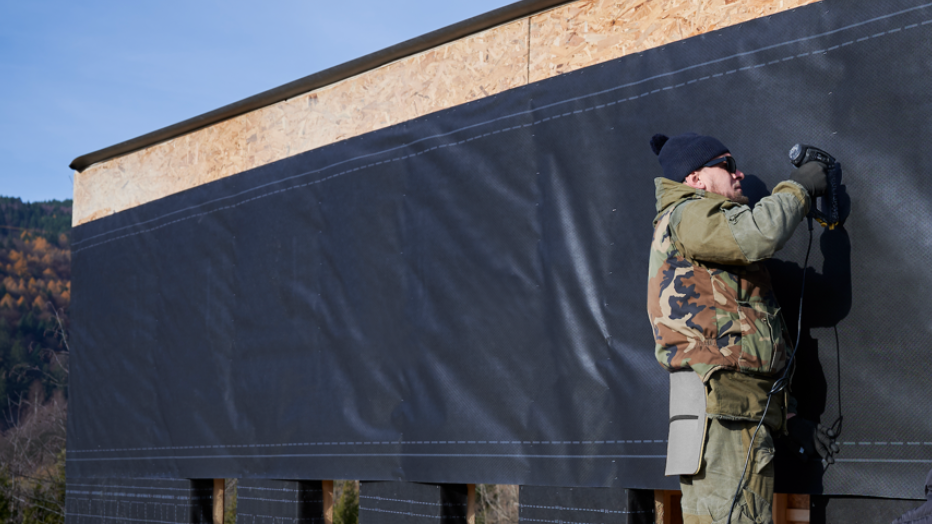When installing siding on exterior walls, it’s important to use an appropriate underlayment or sheathing material to provide a moisture barrier, structural support, and a smooth, even surface for the siding. The choice of underlayment will depend on factors such as the type of siding being installed, local building codes, and environmental considerations. Here are several common options for underlayment used beneath siding:
1. House wrap
House wrap, such as Tyvek or Typar, is a popular choice for creating a weather-resistant barrier beneath siding. It helps to manage moisture by allowing water vapor to escape while preventing liquid water from penetrating the wall assembly. Housewrap is often used in conjunction with other sheathing materials.
2. Building Paper
Asphalt-saturated building paper, commonly known as tar paper or felt paper, has been used for decades as a weather-resistant barrier under siding. It provides some level of water resistance and can serve as a temporary weather barrier during construction.
3. Exterior Gypsum Sheathing
Exterior gypsum sheathing, such as DensGlass, is a moisture-resistant panel designed for use in exterior wall assemblies. It provides a strong, flat surface for siding installation and offers some degree of water resistance.

4. Rigid Foam Insulation
Rigid foam insulation boards can serve as both insulation and a sheathing material. They provide added thermal resistance while also offering a flat, moisture-resistant surface for siding attachment.
5. OSB or Plywood Sheathing
Oriented Strand Board (OSB) or plywood panels are commonly used as structural sheathing beneath siding. These materials provide structural strength and a smooth surface for siding installation. However, they should be paired with an appropriate weather-resistant barrier, such as housewrap, for moisture management.
It’s important to follow local building codes and the manufacturer’s recommendations for the specific type of siding being installed when selecting and installing underlayment. Properly installed underlayment is essential for protecting the structural integrity of the building and ensuring the long-term performance of the siding.
Click here and get a free quote for your siding project with Millers Pro Roofing & Siding


